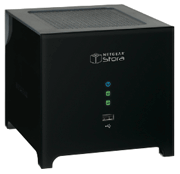 How many hotspots do you use on a regular or semi-regular basis? At this point in my wanderings I’ve amassed so many Wi-Fi hotspot log-ins that I don’t really remember them all–to the point where I try to create new accounts for services that I already have patronized. And when I’m in an area with multiple hotspots, I’m not always sure which one I want to hop on. Is one going to cost me more than another?
How many hotspots do you use on a regular or semi-regular basis? At this point in my wanderings I’ve amassed so many Wi-Fi hotspot log-ins that I don’t really remember them all–to the point where I try to create new accounts for services that I already have patronized. And when I’m in an area with multiple hotspots, I’m not always sure which one I want to hop on. Is one going to cost me more than another?
Hang in there–the Wi-Fi Alliance is working on a cure for hotspot overload. Sometime in the first half of next year, if the current timetable stands, the Alliance–the trade group that certifies Wi-Fi networking gear from different vendors for interoperability–will start certifying hotspots, along with the devices that access them.
Among the benefits of the program for consumers will be streamlined network discovery, account setup and login: Your device will automatically figure out which hotspots you already have accounts with and log you in based on your preferences. Certification will also require use of the strongest available Wi-Fi encryption, WPA2.

 Can setting up a Wi-Fi network ever be drop-dead easy for non-technical folks? Maybe not, but Cisco gives the problem its best shot with
Can setting up a Wi-Fi network ever be drop-dead easy for non-technical folks? Maybe not, but Cisco gives the problem its best shot with It’s been a busy few days for the whole idea of networked hard drives that provide direct Internet connections so you can get to them from everywhere. Last week, Seagate introduced DockStar, a $99 add-on for its FreeAgent Go drives that provides browser-based access to their contents. And today Netgear launched
It’s been a busy few days for the whole idea of networked hard drives that provide direct Internet connections so you can get to them from everywhere. Last week, Seagate introduced DockStar, a $99 add-on for its FreeAgent Go drives that provides browser-based access to their contents. And today Netgear launched  [A note from Harry: Our
[A note from Harry: Our